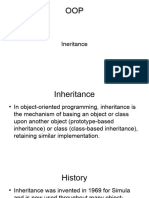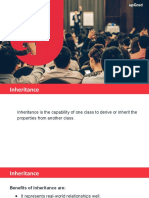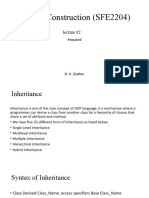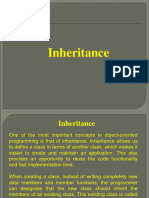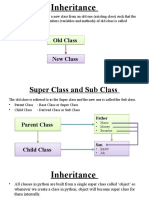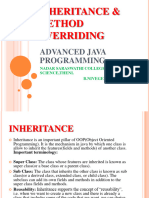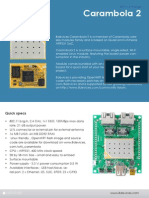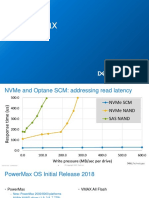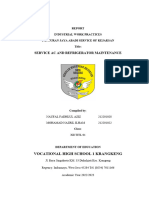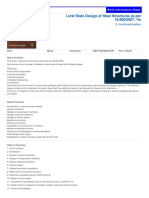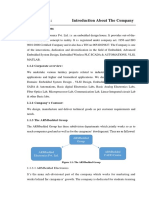0% found this document useful (0 votes)
5 views11 pagesv1 Inheritance C
Inheritance is a key concept in object-oriented programming that allows a child class to inherit attributes and methods from a parent class, promoting code reuse and modularity. There are various types of inheritance including single, hierarchical, multilevel, multiple, and hybrid inheritance. The super() function is utilized to access parent class methods, particularly in initializing inherited attributes within a child class.
Uploaded by
harshavardhan032007Copyright
© © All Rights Reserved
We take content rights seriously. If you suspect this is your content, claim it here.
Available Formats
Download as PPTX, PDF, TXT or read online on Scribd
0% found this document useful (0 votes)
5 views11 pagesv1 Inheritance C
Inheritance is a key concept in object-oriented programming that allows a child class to inherit attributes and methods from a parent class, promoting code reuse and modularity. There are various types of inheritance including single, hierarchical, multilevel, multiple, and hybrid inheritance. The super() function is utilized to access parent class methods, particularly in initializing inherited attributes within a child class.
Uploaded by
harshavardhan032007Copyright
© © All Rights Reserved
We take content rights seriously. If you suspect this is your content, claim it here.
Available Formats
Download as PPTX, PDF, TXT or read online on Scribd
/ 11
